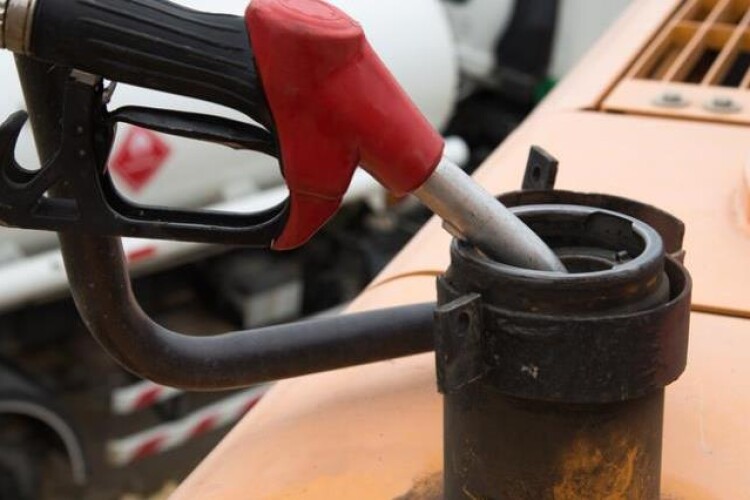Ending the red diesel subsidy will have no short term environmental benefits and simply push up costs for anyone who hires construction machinery, the plant owners says.
In fact, by driving the industry to buy battery-powered machines before the market has matured sufficiently, it will destroy the residual value of diesel-powered fleets and rental prices could rise by 200%, the fleet owners warn.
Scottish Plant Owners Association (SPOA) president Mark Anderson has set out in detail the association’s response to the Treasury’s consultation ahead of the 1st October deadline.
Users of off-highway construction machinery currently pay tax of just 11.14 pence per litre on diesel instead of the standard tax rate of 57.95 pence per litre. (The subsidised diesel is dyed red purely to distinguish it from the standard rate fuel.) The Treasury is planning to scrap this rebate in April 2022.
The construction machinery hire industry in Scotland alone has a hire revenue turnover of £1bn a year, SPOA says, and spends £95m a year on red diesel.
Mark Anderson, managing director of GAP Group in Scotland, says: “The SPOA members like most companies involved in the construction sector make very slim margins – we would foresee 100% of the subsidy removal being passed on. Both our hire rates and fuel costs will increase. We will pass the increased cost directly onto our end customer whether private or government. They will notice the increased cost.”
On behalf of SPOA’s 260 member companies, Mark Anderson explains to the Treasury that the policy shift needs a seven-year lead in to have the desired effect rather than just two years.
“Typically hire companies run their equipment for between five and seven years, the very nature of our industry is we hire out used equipment, thus a two year period before the subsidy removal will not allow sufficient time to bring in alternative fuel machines,” he says. “Furthermore OEM’s will not be in a place to offer a wide enough range of machinery within this time period. There should be at least a seven-year time line put in place before removal of the subsidy – consideration should be made by the government to have the hire industry as one of the exempt industries like agriculture.”
He explains: “Our members invest heavily in equipment and Tier 5 engines are already dramatically more efficient than those used in the car industry. A perverse environmental outcome is that our members are likely to continue to use older, more inefficient machinery for longer than otherwise expected (1) to mitigate the costs of the removal of the rebate and (2) because new investment for a shorter life cycle than seven years (assuming green alternatives become available) is not viable.”

He also warns that hire rates will have to got up by a factor of three if diesel power is pushed out.
“Alternative powered machines are typically three times as expensive as the diesel engine equivalents. We do not yet know the residual value of generation one alternative powered machines, typically the first generation of any product is lower than expected.
“Furthermore (1) the utilisation of alternative powered machines is and will not be as high as diesel machines due to the limitation of the technology and (2) if the rest of the world is still using diesel machines the residual value of alternative powered machines will reduce due to the limited market for re-sale.
“And we do know that the introduction of alternative powered machines and the removal of the red diesel subsidy will reduce the residual value of diesel machines. Thus, due to all the above points our hire rates for alternative powered machines will be over three times the current diesel rate.
“As the introduction of alternative powered machines and the removal of the red diesel subsidy will reduce the residual value of diesel machines, the government should consider a scrappage scheme for our industry to encourage the move to alternative powered machines”.
The SPOA is also concerned that removing the distinction between red and white diesel could open the door to organised crime:
“White diesel is more attractive to steal than red diesel because the market is every user of diesel. To date, theft of red diesel has been more in the nature of pilfering. Theft of white diesel will be scaled up organised crime. There will need to be added security on construction sites to stop fuel theft if white diesel, without dye, is now the main fuel. This will be an added cost for the contractor who controls the site.
“The increased attraction of fuel theft also puts at risk the security of the equipment stored on the site. Our members can anticipate their insurance costs increasing. The increase in theft will also present a risk to human life as not all people stealing fuel will do this safely and the removal and transportation could lead to unintended consequences including environment spills and potential loss of life if removed or transported incorrectly.”
Mark Anderson writes: “Our members are fully behind the aims of this subsidy removal to create lower carbon emissions. However, a clearly thought out timeline of seven years is required to allow the life cycle of our member machinery to end and our OEMs to have the necessary product in place.”
Got a story? Email news@theconstructionindex.co.uk



